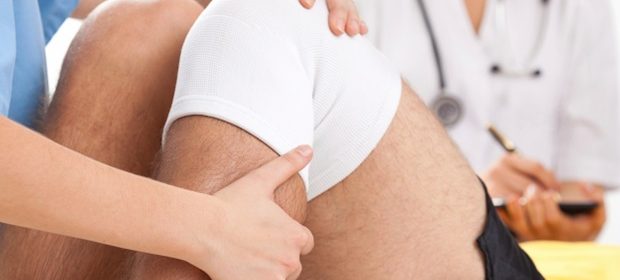Medial Epicondylitis – Golfer's Elbow

Medial epicondylitis is a condition that refers to the occurrence of pain due to inflammation, from the medial side of the elbow to the wrist. It is also commonly referred to as golfer’s elbow, baseball elbow or suitcase elbow, because it frequently affects people who take part in these activities.
Cause
Medial epicondylitis occurs because of damage to the tendons that are responsible for the movements of the wrist towards the palm. Any excessive force used to create this movement can cause the condition, such as:
- Forearm swing or serve in tennis
- Swinging a golf club
- Pitching a baseball
- Throwing a javelin
- Holding a heavy suitcase
- Using an axe to chop wood
- Using a chain saw or other hand tools
People with weak shoulder and wrist muscles are more likely to be affected by the condition. Additionally, the use of sporting or work equipment that is the wrong size or weight for the individual is associated with an increased risk of developing medial epicondylitis.
Symptoms
Pain on the medial side of the elbow to the wrist is the characteristic symptoms of medial epicondylitis. Some patients report sensations of pain from the elbow to the little finger in the hand. The pain usually intensifies when the wrist is bent towards the palm, particularly then there is some resistance to the movement. Grasping or squeezing an object with the hand may also cause pain in affected individuals.
The symptoms typically present gradually with continued used of the forearm muscles to move the wrist. It most often affects the dominant arm, but can affect both arms and the non-dominant arm in some patients.
Diagnosis
The diagnosis of medial epicondylitis usually involves a medical history and physical diagnosis. Most patients who are diagnosed with the condition report participating in activities that frequently cause the condition, such as tennis, baseball, or golf.
During the physical examination, the patient should be asked to rest their arm on the examination table in a comfortable position, with the palm facing up. From this position, the patient should be instructed to lift their hand by bending the wrist with some resistance, such as a small weight. Patients with the condition will report some pain in the inner side of their elbow.
Treatment
Initially, any activity that has been identified as a potential cause of medial epicondylitis should be avoided throughout the recovery process.
There are various physical therapy methods that are commonly used in the management of the condition. The application of an ice pack immediately after an incident can help to reduce inflammation in the area. In the following weeks, a physiotherapist may recommend exercises to improve the strength and flexibility of the connective tissues that support the elbow joint. This is particularly important for the prevention of recurring injuries to the tendon.
Medications may be used to help manage the pain associated with medial epicondylitis. Simple analgesic medications, such as acetaminophen (paracetamol) or aspirin, are commonly recommended. Non-steroidal anti-inflammatory drugs (NSAIDS) can also help to reduce inflammation in the area. Local corticosteroid injections can be used for severe pain to reduce inflammation and aid recovery.
Surgery is rarely used in the treatment of medial epicondylitis, but may be indicated in some situations. The appropriate treatment will depend on the individual characteristics of the case, including the cause, severity and concurrent medical conditions.
It is important for patients who have been affected by the condition to continue doing exercises to strengthen the muscles that support the elbow regularly. This will help to prevent the recurrence of symptoms.
References
- http://emedicine.medscape.com/article/97217-overview#showall
- http://www.hopkinsmedicine.org/healthlibrary/conditions/orthopaedic_disorders/medial_epicondylitis_golfers_and_baseball_elbow_85,P00928/
- http://patient.info/doctor/tennis-elbow-and-golfers-elbow
- https://medlineplus.gov/ency/article/007638.htm
- http://www.pamf.org/sports/king/medial_epicond.html
- https://www.urmc.rochester.edu/encyclopedia/content.aspx?ContentTypeID=85&ContentID=P00928
Further Reading
- All Medial Epicondylitis Content
Last Updated: Feb 27, 2019

Written by
Yolanda Smith
Yolanda graduated with a Bachelor of Pharmacy at the University of South Australia and has experience working in both Australia and Italy. She is passionate about how medicine, diet and lifestyle affect our health and enjoys helping people understand this. In her spare time she loves to explore the world and learn about new cultures and languages.
Source: Read Full Article